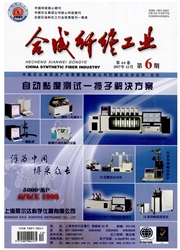

 中文摘要:
中文摘要:
采用静置、机械搅拌、捏合3种溶解方式制备了纤维素/1-丁基-3-甲基咪唑氯化物([BMIM] Cl)溶液,对3种溶液进行了稳态、动态、温度扫描等流变性能测试,研究了溶解方式对纤维素/[BMIM]Cl溶液流变性能的影响.结果表明:静态溶解得到的溶液表观黏度和松弛时间较大,搅拌次之,捏合最小;3种溶液黏弹性的温度依赖关系符合Winter等所提出的凝胶化转变现象,都是物理凝胶;溶解方式对其凝胶化转变温度有一定的影响,静置溶解得到的溶液的凝胶点温度最高,而捏合溶解得到的溶液的凝胶点温度最低,不同溶解方式所形成的溶液的结构化程度有显著差异.
 英文摘要:
英文摘要:
Cellulose/l-butyl-3-methylimidazolium chloride ([BMIM] Cl) solutions were prepared by three kinds of dissolving methods including standing,mechanical stirring and kneading.The effects of dissolving methods on the rheological behavior of the cellulose/[BMIM] Cl solutions were investigated by steady-state measurement,dynamic measurement and temperature sweep.The results showed that the standing dissolving method contributed the highest apparent viscosity and relaxation time to the solution,the stirring method took the second place,and the kneading method was the third; the temperature dependence of viscoelasticity of the three solutions followed the gel transition phenomenon proposed by Winter,et al,and they were all physical gels; the dissolving method had a certain effect on the gel transition temperature,the standing method produced the highest gel transition temperature when the kneading method produced the lowest; and different dissolving methods provided quite different structuralization of the solutions.
 同期刊论文项目
同期刊论文项目
 同项目期刊论文
同项目期刊论文
 期刊信息
期刊信息
